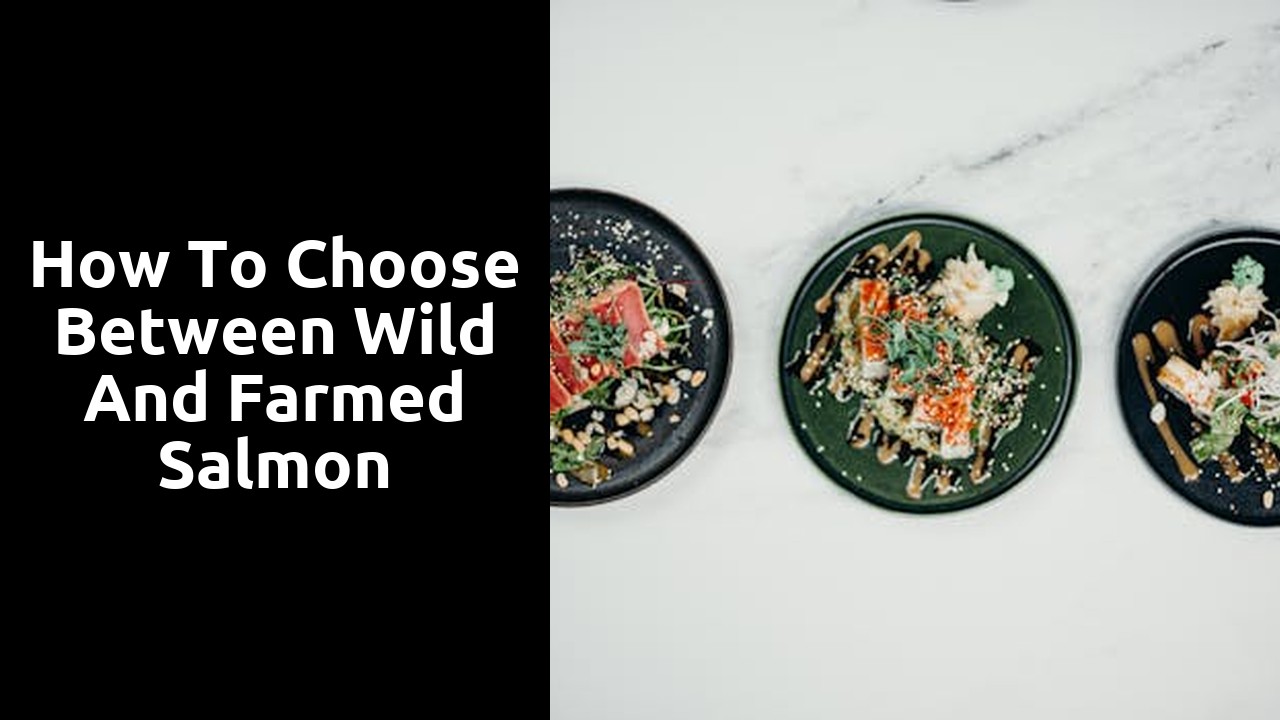How to Choose Between Wild and Farmed Salmon

Sustainability Factors of Wild and Farmed Salmon
When considering the sustainability of wild and farmed salmon, it is essential to examine various factors. Wild salmon populations are affected by overfishing, habitat destruction, and bycatch issues in the oceans. Conversely, farmed salmon production can contribute to water pollution and the spread of diseases to wild fish populations, impacting the overall ecosystem. Therefore, consumers must evaluate the environmental impact of both options before making a decision on which type of salmon to purchase.
Furthermore, the feed sources for farmed salmon can also have an impact on sustainability. Some farmed salmon are fed a diet that includes wild fish, putting additional pressure on marine resources. On the other hand, there are efforts to develop more sustainable feed options using plant-based ingredients. By understanding these sustainability factors, consumers can make more informed choices that align with their values and support the long-term health of our oceans.
Fishing and Farming Practices
When it comes to the fishing and farming practices of salmon, there are distinct differences between wild-caught and farmed varieties. Wild salmon are caught in their natural habitats, typically in the open ocean or rivers. Fishermen often use sustainable methods such as line fishing to minimize environmental impact and preserve wild fish populations. On the other hand, farmed salmon are raised in controlled environments such as fish farms or sea cages. These farming practices can vary significantly, with some farms implementing more sustainable and eco-friendly methods than others.
Farming practices for salmon often involve feeding the fish with a specifically formulated diet to ensure they grow quickly and remain healthy. However, concerns have been raised about the use of antibiotics and chemicals in some farmed salmon operations, which can have negative implications for both the fish and the environment. Understanding the fishing and farming practices behind the salmon you choose to consume is crucial for making an informed decision about which type of salmon is best for you and the planet.
Cooking Methods for Wild and Farmed Salmon
When it comes to cooking wild and farmed salmon, the method you choose can greatly impact the flavour and texture of the fish. For wild salmon, a simple preparation method such as grilling or baking can enhance the natural richness and oiliness of the fish. Wild salmon has a bold flavour that can stand on its own with minimal seasoning, making it a versatile option for various recipes.
On the other hand, farmed salmon tends to have a milder flavour compared to wild salmon. Due to its lower oil content, farmed salmon can benefit from marinating or using more robust seasonings to add depth of flavour. Pan-searing or poaching farmed salmon can help retain its moisture and create a moist, tender result that pairs well with different sauces and accompaniments. Experimenting with different cooking techniques can help you discover the best way to enjoy both wild and farmed salmon based on your personal taste preferences.
Recommended Recipes
For those looking to explore the culinary world of salmon beyond the standard grilled fillet, consider trying your hand at a delectable homemade salmon poke bowl. The vibrant colours of fresh salmon combined with creamy avocado, crunchy cucumber, and tangy pickled ginger make for a visually striking and delicious dish that is both nutritious and satisfying.
For a more indulgent treat, why not attempt a mouth-watering salmon en croute? This classic French dish pairs flaky salmon fillets with a rich duxelles of mushrooms and aromatic herbs, all encased in buttery puff pastry. Serve with a side of lemony hollandaise sauce and some crisp green vegetables for a truly decadent dining experience that is sure to impress even the most discerning of food connoisseurs.
Availability and Seasonality of Wild and Farmed Salmon
When considering the availability and seasonality of wild and farmed salmon, it is important to understand the differences in their production and distribution. Wild salmon is typically caught during specific fishing seasons, which vary depending on the species and location. For example, Pacific wild salmon is most abundant during the summer months, while Atlantic wild salmon runs are usually in the spring and summer.
On the other hand, farmed salmon is available year-round due to controlled farming practices that regulate the salmon's growth and harvest. This means that consumers can enjoy farmed salmon at any time of the year, without having to worry about specific fishing seasons. However, it is crucial to consider the environmental impact of farmed salmon production, as intensive farming practices can lead to pollution and habitat destruction.
Harvesting Times
When it comes to the harvesting times of wild and farmed salmon, there are distinct differences between the two. Wild salmon are typically harvested during specific seasons when they are making their way back to their spawning grounds. This usually occurs in the summer and autumn months, varying slightly depending on the species and location.
In contrast, farmed salmon are harvested year-round as they are raised in controlled environments. Farmers can regulate the water temperature and feeding schedules to ensure a continuous supply of salmon throughout the year. This means that consumers have greater access to farmed salmon regardless of the season, offering a more consistent option for those who enjoy this popular fish.
Related Links
How to Cook Wild and Farmed SalmonThe Ultimate Guide to Sustainable Seafood
Review: The Best Sustainable Salmon Brands
5 Sustainable Seafood Labeling Certifications to Know
The History of Sustainable Salmon Fishing
Why We Need to Address Overfishing of Wild Salmon Stocks
Why Sustainable Seafood Choices Matter
What Are the Environmental Impacts of Wild Salmon Fishing